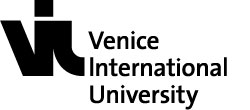F2121 History and Memory at the Intercultural Crossroads
Professors
Schedule
Course description
This course will examine the embodiment of history and memory in literature at intercultural crossroads (with an emphasis on U.S. literature) and how this literature displays intercultural transitions, identities, joys, and problems. We will interrogate the use of the term “intercultural” which has become one way of thinking about the interactions between cultures, as well as other terms like “cross-cultural,” “transcultural,” transnationalism,” etc. These intersections have been a result of immigration, colonization, ever-increasing globalization, and so forth. Given the relative shortness of the course, we can only begin or continue, for those who already possess intercultural experience, an exploration of these ideas. The notion of intercultural competence arose in the fields of social science and language studies as a way for students to become more adaptable in cultural contexts different than their native one. The social scientist Milton Bennett developed the “Developmental Model of Intercultural Sensitivity” in the 1980s to measure such intercultural competence. Moreover, in general, literature has often been used as a way to explore issues of culture and identity as functions of history and memory, and, more recently, how culture and identity interact when different cultures intersect with each other, whether from a social science or literary studies perspective. The literary texts we will use draw on history and memory to explore what it means to be at the intercultural crossroads. Although our primary texts will be literature and the basis of our studies will be literary studies, the ideas we will deal with will hopefully also affect your way of thinking and behaving in real life situations. During the first half of the course, we will read and discuss autobiographies, short stories, and essays that explore being at the crossroads and what it means to interact with different cultures. We will take a broad historical sweep from the eighteenth to the twenty-first centuries. Likely texts include Crèvecoeur’s Letters from an American Farmer (1782), Equiano’s The Interesting Narrative of the Life of Olaudah Equiano (1789), George Copway’s The Life, History and Travels of Kah-ge-ga-gah-bowh (1847), Harriet Martineau’s “The Secrets of the Hareem” (1848), Anzia Yezierska’s “How I Found America” (1920), Hisaye Yamamoto’s “Seventeen Syllables” (1949), Salman Rushdie’s “Imaginary Homelands” (1982), Gloria Anzaldúa’s “How to Tame a Wild Tongue” (1987), Junot Diaz’s “Negocios” (1996), and Chimamanda Ngozi Adichie’s “My Mother, the Crazy African” (2009). During the second half of the course, students will produce their own writing (fiction, autobiography, creative nonfiction, essay, etc.) that expresses their perspective on being at intercultural crossroads. Students should be prepared to engage actively in discussions of both the literature and other students’ writings; in part, this requires doing the readings before we discuss them, but it also requires a mindset that is open and willing to express your thoughts and ideas on the subject. Since there will be students from many countries, this will be a perfect chance to engage interculturally with others.
Learning outcomes
Students will gain an understanding of the academic analysis of literature, how authors position themselves in relation to national identity and transnationalism, how we position ourselves in relation to those things, and, for nonnative English speakers, developing academic English skills in reading, discussion, listening, and writing. The hope is also that students will learn to broaden perspectives on things related to the interaction of cultures.
Teaching method
The course will be based mostly on interactive student presentations and class discussion guided by the instructor.
Evaluation methods
Presentation: 30%
Class participation: 30%
Final paper: 40%
Bibliography
J. Hector St. John de Crèvecoeur, Letter III (What Is an American) [excerpt] from Letters from an American Farmer (1782, 14 pages)
Olaudah Equiano, Chapter II from The Interesting Narrative of the Life of Olaudah Equiano, or Gustavus Vassa, the African (1789, 17 pages)
George Copway, Chapter VII from The Life, History and Travels of Kah-ge-ga-gah-bowh: A Young Indian Chief of the Ojebwa Nation (1847, 7 pages)
Harriet Martineau, “The Secrets of the Hareem” (1848, 15 pages)
Hisaye Yamamoto, “Seventeen Syllables” (1949, 12 pages)
Salman Rushdie, “Imaginary Homelands” (1982, 6 pages)
Gloria Anzaldúa, “How to Tame a Wild Tongue” (1987, 11.5 pages)
Junot Diaz, “Negocios” (1996, 45 pages)
Chimamanda Ngozi Adichie, “My Mother, the Crazy African” (2009, 7 pages)




















